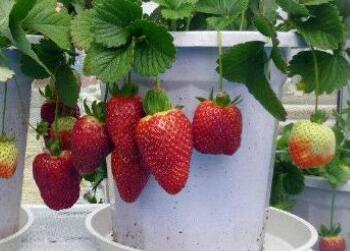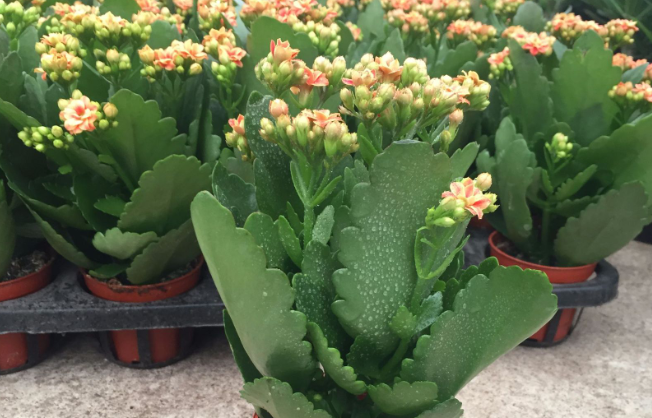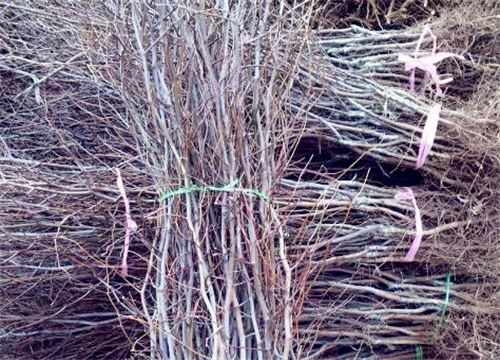A detailed description of strawberry pot planting techniques can reap a bumper harvest at home
Many people like to eat strawberries, sweet and delicious, one mouthful is very satisfied, and the nutritional value is very rich, is the fruit "vitamin C" content is more. Strawberries are relatively expensive, and there are rumors of waxing strawberries outside, which makes people uneasy to eat. Some friends who like to plant strawberries grow strawberries in pots at home. The following is a detailed explanation of strawberry pot planting techniques to see how home-grown strawberries get a bumper harvest.

I. selection of potted strawberries
Potted strawberries can be selected for fruiting in four seasons, among which European Sijihong, Changhong No. 2 and 83-38 are the preferred varieties.
Potted strawberries can be planted all the year round, but the survival rate of 9-Mel-Mel in October is the highest.
Strawberry seeds are small, and attention should be paid to keeping the technique gentle in the process of handling the seeds.
Before sowing, soak the seeds with clean gauze and put them in the refrigerator for a low temperature treatment of about half a month. The temperature in the refrigerator should be controlled between 0 °- 3 °C. The germination rate of the seeds treated with low temperature was higher in the future.
When sowing, the seeds are mixed with plant ash and sowed to the surface of the basin soil, and then covered with a thin layer of fine soil. Then gently spray the oxygen-rich water or cold boiled water on the surface of the substrate until the basin soil is fully infiltrated, and then cover it with plastic film to keep the temperature and humidity in the basin relatively constant.
After doing all this work, put the flowerpot in a sunny place and maintain it. After about 20 murmurs for 30 days, the buds broke out.
Second, the selection and treatment of training instruments
Potted strawberries per plant should choose a plain roasted pottery pot with a diameter of 20m / m / m / m. If you raise more strawberries, you can put them in full bloom with wooden boxes.
Check the leakage of the flowerpot and the bottom of the wooden box before use. In addition, soak the flowerpot or wooden box in water before planting.
III. Selection and preparation of soil
Potted strawberries prefer fertile, loose and well-ventilated soil. If conditions are available, humus soil on the surface of broad-leaved forest can be selected as substrate. This kind of soil has been weathered for a long time in nature, which is rich in nutrients and has good water absorption and drainage performance.
In addition, the cultivated soil can also be prepared manually according to the regional conditions.
The usual practice is to take one part of the garden soil, one part of river sand, one part of rotten chicken, duck or sheep droppings, and then sift for use.
Humus soil has a characteristic that contains microorganisms, so it is necessary to disinfect it with 0.3% potassium manganate aqueous solution before use.
IV. Colonization operation
Before planting, select strong seedlings, cut off stolons and old residual leaves, leave 3 young leaves, and trim the roots to a length of about 10 cm.
Pay attention to make it bring more original soil when raising seedlings.
Next, dig a hole in the basin soil that fits the strawberry root system, stand the strawberry upright, keep the root system vertical and stretched, sit in the hole, and then gently flatten it with your hand.
After planting, gently irrigate the pot edge with oxygen-enriched water along the edge of the pot until the soil is fully infiltrated, so that the plant is closely attached to the soil, and then cover it openly with plastic bags to keep the temperature and humidity in the basin relatively constant.
5. Fertilizer and water management
After planting, we should pay attention to observe the changes of water in the seedlings and pots. If we need to replenish water, the time should be arranged in the early morning or evening. The water used to water the flowers should be fully dried, and tap water should not be used directly. There is residual chlorine in tap water, which will harm the root system of the plant. at the same time, the temperature of tap water is too low, and direct use will stimulate the root system to make the plant sick.
Strawberries of the four seasons blossom and bear fruit many times a year, and the plant consumes a lot of nutrients, so it is necessary to strengthen the supplement of nutrients. In the family, the kitchen waste can be used to produce good flower fertilizer, which is economical and environmentally friendly.
In the family, there are many materials that can be used for retting to make flower fertilizer, such as peanuts, melon seeds and beans, fine fish bones and hoof horns can be retted to produce phosphate fertilizer, and peel, especially banana peel and rice washing water, can be used to produce potash fertilizer.
These fertilizers are natural organic fertilizers, which contain a variety of nutrients needed for flower growth. The fertilizer effect is mild and long-lasting. It is also conducive to the formation of soil aggregate structure and plays a role in soil improvement.
VI. Potted plant modeling
Potted strawberries will have stolons in the process of growth, so they should be removed in time, which can reduce the consumption of nutrients and improve the fruit quality.
After setting strawberries, small tools such as bamboo strips can be used to make shelves and hold up the fruit when the stalk hangs down.
For this purpose, first, it is conducive to ventilation and light transmission of the plant, so that the color of the ripe fruit is uniform; second, it can prevent the fruit from being contaminated by soil and reduce the quality; third, it can make the shape of the plant more beautiful and have a certain degree of appreciation.
7. Change the basin regularly
Two years after strawberry fruit, the reproductive function of the plant will decline, which will inevitably affect the quality of the fruit, so it needs to be replanted after two years of planting.
Usually after fruiting, the plant can be taken out of the pot, cut off the senescent root, dead root and lower rhizome, and then planted in a new pot soil, or directly planted new seedlings.
VIII. Solutions to diseases and insect pests
There are few diseases and insect pests in potted strawberries, but if they are not managed properly, the plants are easily attacked by aphids, which can be solved by spraying plants with imidacloprid, a special insecticide for flowers.
There is also a simple method that people learn from experience, that is, a few drops of vegetable oil in the washing powder water of 1Ru 200 are fully stirred and sprayed with plants, and the effect is also very good.
Time: 2019-03-13 Click:
- Prev

How to raise longevity flowers? Teach you how to grow longevity flowers by hand!
Longevity flower, the scientific name Christmas cabbage, is a perennial succulent herb, the adult plant is about 10 to 30 centimeters tall, the flowers are mostly orange, scarlet, but also white, yellow and other colors. The florescence lasts from two to five months. The leaves of longevity flowers are dense, green and shiny, and usually blossom at Christmas.
- Next

How much is the wholesale price of jujube seedlings? Remember that these six tips can be planted in the same year!
In the past two years, the price of jujube can not be cheap, has been maintained at about 10 yuan per jin, even if the seasonal fruit is also sold to 8 yuan per jin, not the seasonal fruit price is even higher! Moreover, there is no downward trend in prices in recent years. So many fruit growers began to plant jujube trees.
Related
- Fuxing push coffee new agricultural production and marketing class: lack of small-scale processing plants
- Jujube rice field leisure farm deep ploughing Yilan for five years to create a space for organic food and play
- Nongyu Farm-A trial of organic papaya for brave women with advanced technology
- Four points for attention in the prevention and control of diseases and insect pests of edible fungi
- How to add nutrient solution to Edible Fungi
- Is there any good way to control edible fungus mites?
- Open Inoculation Technology of Edible Fungi
- Is there any clever way to use fertilizer for edible fungus in winter?
- What agents are used to kill the pathogens of edible fungi in the mushroom shed?
- Rapid drying of Edible Fungi

